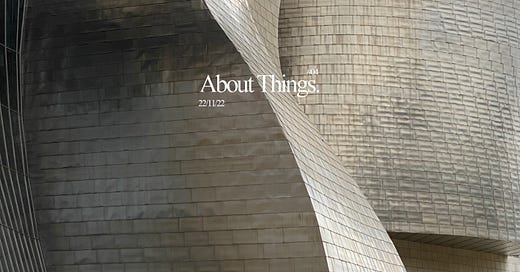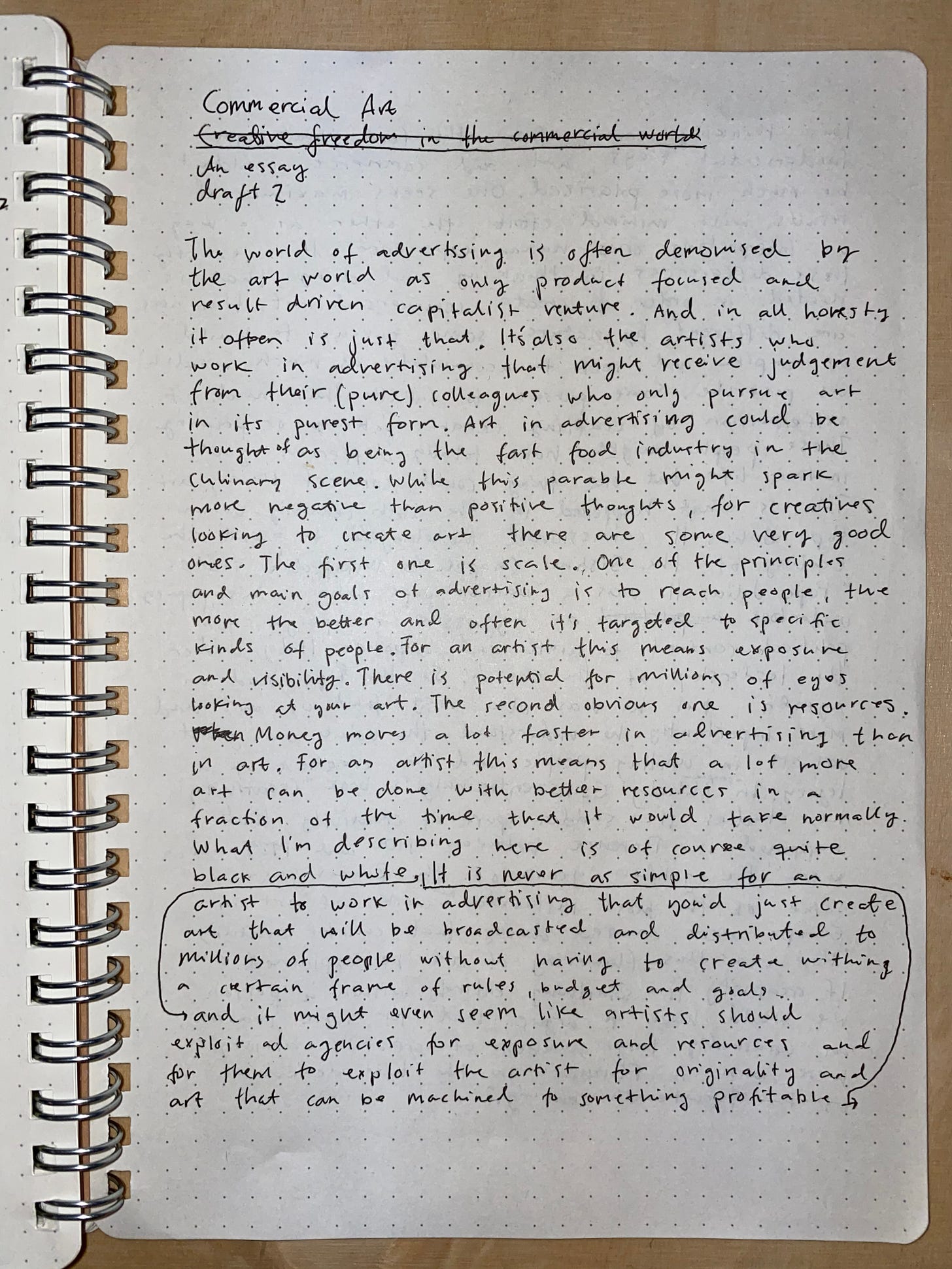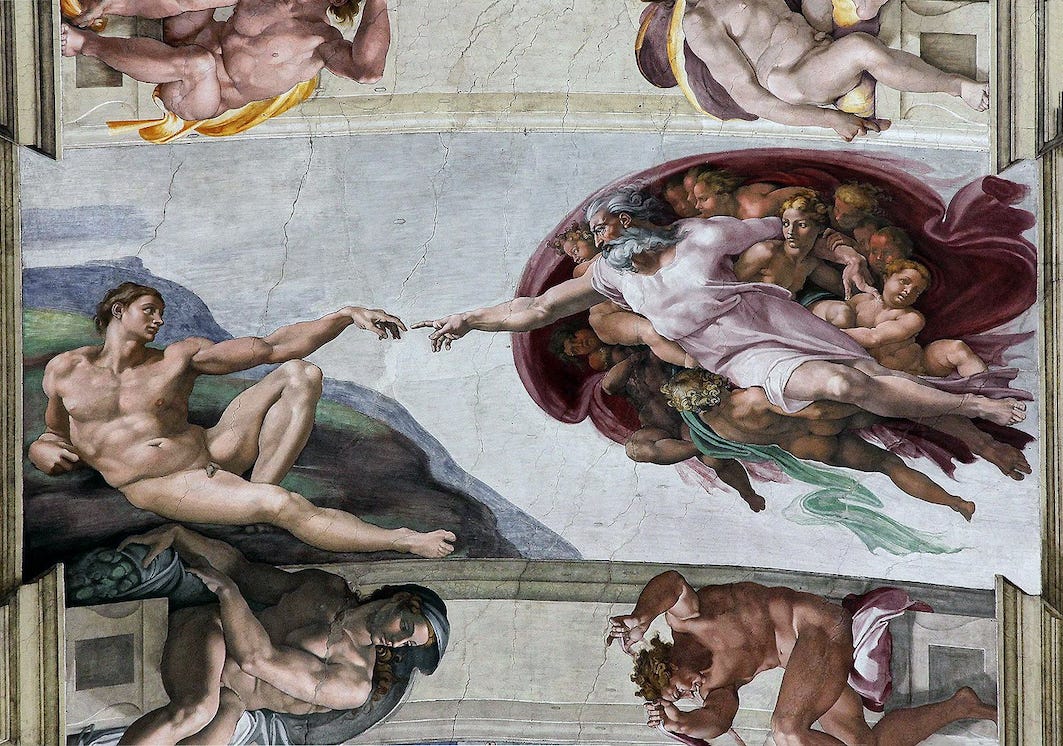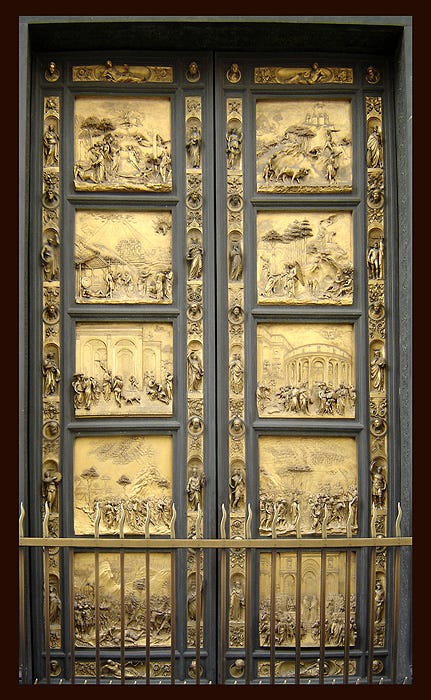#04 Commercial Art?
I write this newsletter to structure my experiences and ideas around creativity. It’s mainly a personal exercise in writing, but I’m sure there is something for you as well.
My name is Juho Vesanen and I’m a co-founder of Veli Studio. I’m also editing the studio’s annual passion project Attraction Magazine – a printed and online exploration dedicated to the appreciation of visual curiosity.
#04 Commercial Art
I recently flipped through my old notebook and found the original draft of this essay that I wrote in the summer of 2020. Now that I look at it some two years later, I think it’s a bit rough around the edges and even a bit controversial. Talking about a toothpaste commercial and Michelangelo’s work in the same sentence might have been a bit bold, but I let you be the judge 💁
#03 Commercial Art?
The world of advertising is often demonized by the art world as being solely product focused and a result driven capitalist venture. And in all honesty it is often exactly that. It’s also the artists who work in advertising that might receive judgment from their colleagues who only pursue art in its purest form. Art in advertising could be thought of as being the fast food industry in the culinary domain. While this might and should spark more negative than positive thoughts for creative artists, there is a flip side to the coin.
There are two things that are much more available in the commercial than in the art world - scale and resources. One of the principles and main goals for advertising is to reach people, the more the better. For an artist this means exposure, there could potentially be millions of people looking at your art. Resources are also more readily available, money moves a lot faster in advertising than in art. For an artist this means that a lot more art can be done with better resources in fraction of a time it would normally take.
What I’m describing here is of course completely black and white and it might even seem like artists should just exploit the advertising agencies for exposure and resources and that the advertising agencies should exploit the artists for originality and art which could then be machined to something profitable. This extreme thinking comes from the fact that in a fundamental way, art and commerce could not be more polarized. One seeks to maximize profit, the other to self-express without external pressure.
However, it is exactly these differences in thinking and doing that is needed to create something called commercial art. Humans are different by nature, some pursue to build an empire and accumulate as much wealth as possible. Others find solace in crafting pottery as a way of expressing themselves. These people have very different goals in life, but it is the appreciation of art and aesthetics that can connect them.
This is what happened in the 16th century when Pope Julius II commissioned Michelangelo to paint the ceiling of the Sistine Chapel. As Wikipedia states: “Pope Julius II was a “warrior” pope who in his papacy undertook an aggressive campaign for political control to unite and empower Italy under the leadership of the church.” So the Pope had an agenda, but he also had an appreciation of the arts and he understood the value of it in bringing people together. If we had to point at something we consider as art as a definition, the ceiling of the Sistine Chapel and Michelangelo as an artist would be one of the first to come up. Yet this masterpiece was a commissioned piece of work that served an agenda set by the commissioner making it commercial art.
In a chapter of Mihaly Csikszentmihlyi’s wonderful book “Creativity” he studies the sudden spurt of artistic creativity that happened in Florence between 1400 and 1425. “These were the golden years of the Renaissance, and it's generally agreed that some of the most influential works of art in Europe were created during that quarter century. How can this flowering of art be explained? If creativity is something entirely within a person, we would have to argue that for some reason an unusually large number of creative artists were born in Florence in the last decades of the fourteenth century.” He rightfully claims that it took more than pure luck of a bunch of creative artists to be born in Florence to explain this phenomena. At the time, the neighboring cities of Siena, Pisa and Arezzo were jealous of Florence’s wealth and wellbeing and there was a clear sense of rivalry between them. This sparked a wave of investments from the leaders of Florence to make the city the “most beautiful city in Christendom - in their words ’a new Athens.’” By doing so the leaders tried to increase their power and status, and in a way this investment paid off some five hundred years later. When Hitler “ordered the retreating German troops to blow up the bridges on the Arno and level the city around them, the field officer refused to obey on the grounds that too much beauty would be erased from the world - and the city was saved.”
The main importance here is that a lot of the art that we now think of art in its truest form was originally a commissioned piece - or commercial art if you will. For this to happen it takes people who are culturally well educated and who are willing to invest in art as a way to further their cause. But as Mihail states “The important thing to realize is that when the Florentine bankers, churchmen and heads of great guilds decided to make their city intimidatingly beautiful, they did not just throw money at artists and wait to see what happened. They became intensely involved in the process of encouraging, evaluating and selecting the works they wanted to see completed.” Here he is basically describing a very good client, who has a clear framework and guiding principles but who trusts and encourages the artists to improve on it - good management, not micromanagement.
It’s also interesting how the same bidding process that is quite standard these days was already used back then. In 1401 a board composed of eminent individuals who were financing the design and building of the doors of the baptistery in Florence, announced a competition to find the artist worthy of this project. The board had done their research and crafted a brief which was then given to the artists who were bidding for the job. An artist named Lorenzo Ghiberti came on top and that project became “one of the uncontested masterpieces of the period, which Michelangelo declared was worthy of being called the Gate of Paradise.” as Csikszentmihlyi writes in his book. This piece of work changed the western world’s conception of decorative art and is today a monument that people travel all over the world to see and admire.
Lorenzo Ghiberti is without a doubt a great artist and his vision unquestionable, however it has to be noted that the Gates of Paradise could not have happened if it was just up to Ghiberti and his singular vision. Or maybe it could and nobody would have ever seen it nor would it be a benchmark in art history. Creativity and art can’t happen only within a person, but rather in the relationship within a system...thus the sociolologist of art Arnold Hauser rightly assess the period: “In the art of the early Renaissance…the starting point of production is to be found mostly not in the creative urge, the subjective self-expression and spontaneous inspiration of the artists, but in the task set by the customer.”
Now these examples might seem a bit too grand in relation to modern advertising and the world of commerce in general, but the same rules and methods can be applied in a lot more domains than architecture. It’s not always about making something for the history books, but rather being in the culture of that being one possible outcome. Of course if you are making a toothpaste commercial, it’s pretty clear that it won’t be displayed next to Michelangelo’s work in a museum, but if the process of making it shares the same core values and practices, who knows. It might have more views in a day than the Sistine Chapel has visitors in a year.
I feel that we are on the eve of something new. With Covid-19 hitting very hard on all areas of entertainment and advertising there has been a rising need for meaning and thoughtfulness in everything we consume on a daily basis. I hope that this could be the turning point where the polarized fields of art and commerce could move closer towards collaboration in a permanent way. Let’s start using our creative freedom again in a sustainable way.
CURRENT INSPIRATION
Oli Kellet’s Soap drawings
The drawings show a bar of soap on a soap dish which I draw everyday in the same position, recording the minute changes as it gets smaller and smaller until it’s gone. Then I begin with a differen soap, on a different soap dish and so on.
The soothingly simple and brutalistic illustrations by Kieran Gabriel
THE STUDIO
Veli Studio is a full service creative studio based in Helsinki.
Website – Instagram – Behance – Linkedin – Attraction Magazine
LET’S CONNECT
Thank you for reading this far. If you found something worth sharing with others, please do so!
If you feel like we should talk, hit me an email – I promise to get back to you.










